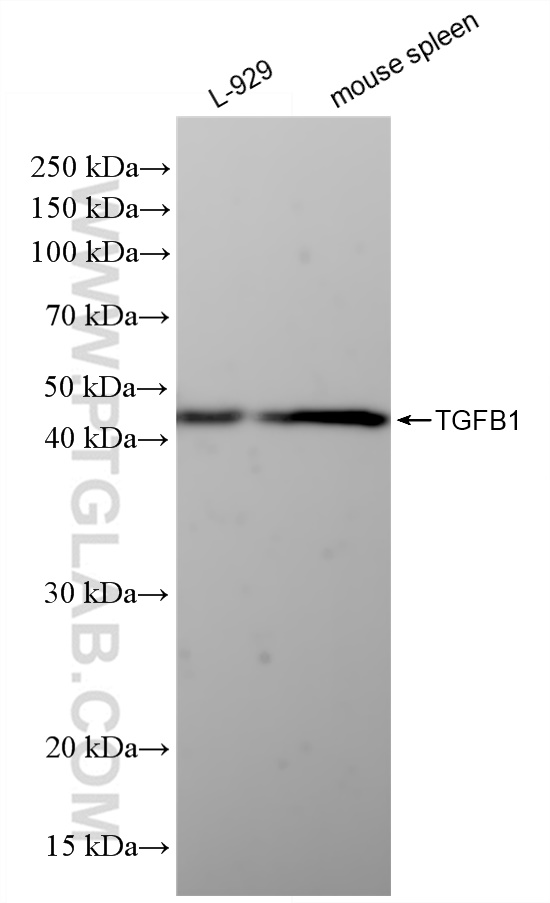验证数据展示
产品信息
81746-2-PBS targets TGF Beta 1 in WB, IHC, IF/ICC, FC (Intra), Indirect ELISA applications and shows reactivity with human, mouse samples.
| 经测试应用 | WB, IHC, IF/ICC, FC (Intra), Indirect ELISA Application Description |
| 经测试反应性 | human, mouse |
| 免疫原 | TGF Beta 1 fusion protein Ag13591 种属同源性预测 |
| 宿主/亚型 | Rabbit / IgG |
| 抗体类别 | Recombinant |
| 产品类型 | Antibody |
| 全称 | transforming growth factor, beta 1 |
| 别名 | TGFB1, TGFB1,TGF beta 1,TGFbeta,TGF-beta 1, TGF-beta1, Tgfb 1, TGFB |
| 计算分子量 | 44 kDa |
| 观测分子量 | 44 kDa |
| GenBank蛋白编号 | BC000125 |
| 基因名称 | TGFB1 |
| Gene ID (NCBI) | 7040 |
| 偶联类型 | Unconjugated |
| 形式 | Liquid |
| 纯化方式 | Protein A purfication |
| UNIPROT ID | P01137 |
| 储存缓冲液 | PBS only , pH 7.3 |
| 储存条件 | Store at -80°C. The product is shipped with ice packs. Upon receipt, store it immediately at -80°C |
背景介绍
TGFB, also named as LAP and TGFB1, is a multifunctional peptide that controls proliferation, differentiation, and other functions in many cell types. TGFB acts synergistically with TGFA in inducing transformation. It also acts as a negative autocrine growth factor. Dysregulation of TGFB activation and signaling may result in apoptosis. Many cells synthesize TGFB and almost all of them have specific receptors for it. TGFB positively and negatively regulates many other growth factors. It plays an important role in bone remodeling as it is a potent stimulator of osteoblastic bone formation, causing chemotaxis, proliferation and differentiation in committed osteoblasts. It is highly expressed in bone. Mutation of TGFB are the cause of Camurati-Engelmann disease (CED) which known as progressive diaphyseal dysplasia 1 (DPD1). Full-length, inactive 44 kD TGFB1 is cleaved into mature TGFB1 (13 kD). TGFB1 also homodimerizes and heterodimerizes with TGFB2, so there is potential for multiple different band sizes in WB (12, 25, 45 to 65 kDa).







